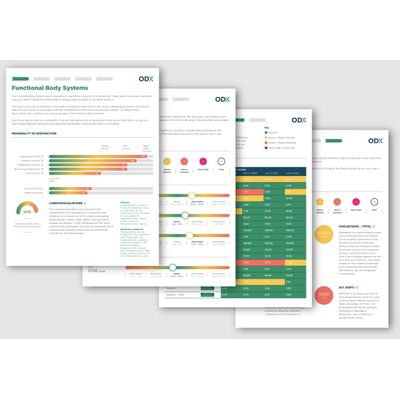


Functional Blood Chemistry Analysis
Functional Blood Chemistry Analysis, or FBCA, is a powerful tool for Naturopathic Physicians, Chiropractic Physicians, practitioners of Functional Medicine, nutritionists, health coaches and other members of the healthcare ecosystem to assess patients, identify dysfunction and treat it early. The prevailing myth about blood chemistry analysis is that it’s a diagnostic tool only used for determining the presence or absence of disease. This, however, isn’t true. When conducted from a functional perspective, blood chemistry analysis can be an incredible method for preventing the evolution of dysfunction into disease. Applied correctly, FBCA can serve as a signpost on a patient’s journey to optimal health. Let’s explore how.
Not exactly useful. What`s more, its tedious nature meant that this process wasn’t exactly feasible to do for every patient that might need a blood cell count.
Today, blood chemistry analysis provides a lot more information than just a count of circulating red blood cells. Medical practitioners regularly evaluate the levels of various biomarkers in the blood to detect the presence or absence of diseases of all stripes. If your fasting blood glucose comes back above 110 mg/dl, for example, your doctor might suspect that you have diabetes.
In contrast to allopathic medicine’s focus on disease, the functional approach to blood chemistry is a patient-focused one.
An allopathic practitioner looks to categorize a patient’s symptoms under a specific disease to deploy a specific treatment plan tailored to that disease. This approach begins with disease and works back to the patient. Functional medicine does the opposite; it starts with the patient and their concerns, then works towards treating those concerns.
By building a holistic, comprehensive picture of their patients’ health, functional medicine practitioners provide treatment plans tailored to the patient. Ideally, this helps to prevent the disease from occurring in the first place. Going even further, it helps to prevent states of dysfunction — that is, those states of imperfect health that fall through the cracks of disease diagnosis.
If Functional Medicine differs from allopathic medicine in that it focuses on the patient rather than the disease, how is that reflected in blood chemistry?
Allopathic blood chemistry analysis relies on whether or not a given biomarker’s values are inside or outside of a laboratory’s reference range. These ranges are calculated based on the average values found within a sample population. Blood testing laboratories define “normal” as the values reflected in roughly 95% of their sample — the upper 2.5% and lower 2.5% are considered to be abnormal.
The problem here is that many practitioners only diagnose disease or dysfunction based on whether their patients’ blood tests fall outside of the broad range of values found within the 95% reference ranges. But these are statistical averages; not true markers of actual health.
Rather than say their patients’ blood biomarkers fall within “normal” limits that have very little to do with the individual`s real health, Functional Medicine practitioners use blood chemistry analysis by looking at much tighter ranges. These functional blood chemistry ranges are empirically correlated with real health outcomes, and by tracking their patients’ progress toward or away from those ranges, practitioners help guide their patients toward optimal health — not merely “normal” health.
